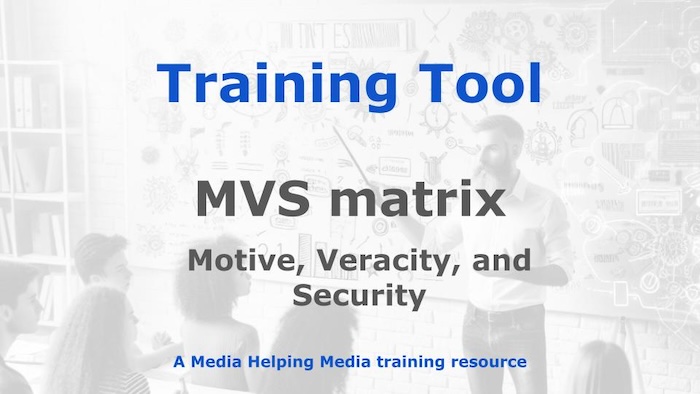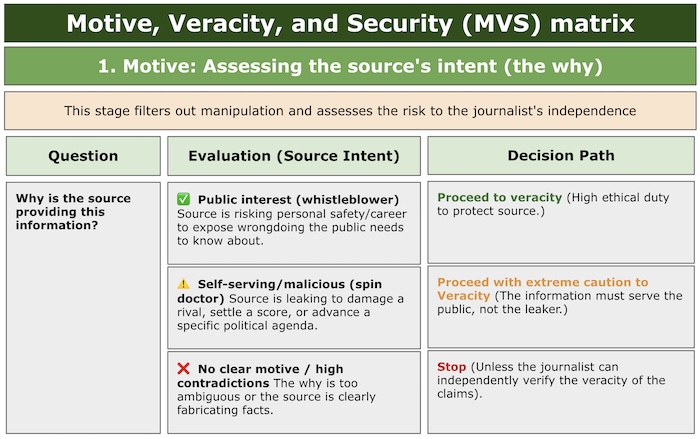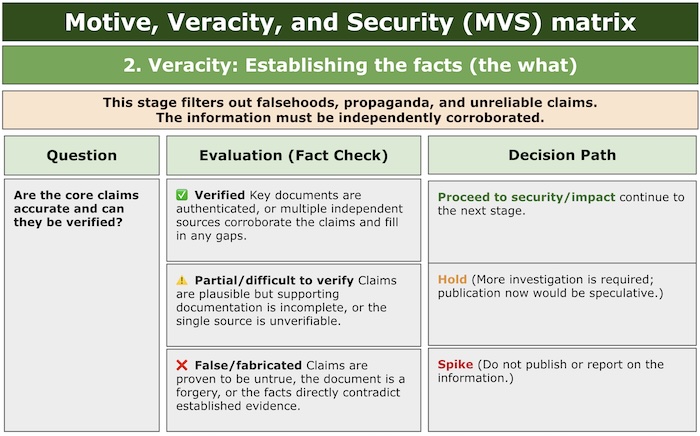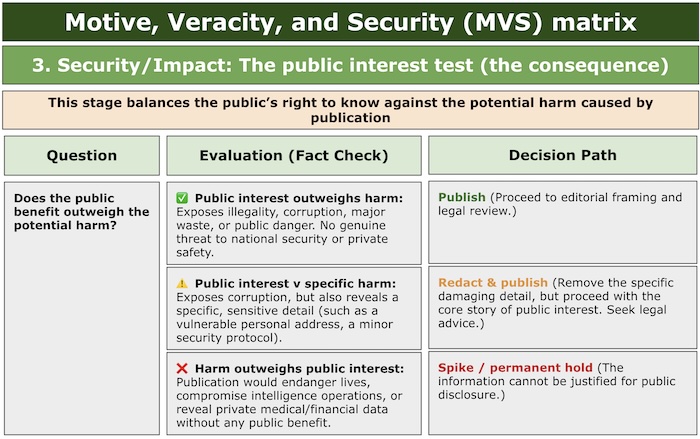 This free Media Helping Media matrix is designed to help journalists assess the risks and benefits of investigating a tip-off or a leak. The tool is essential for ensuring our investigative journalism is ethical.
This free Media Helping Media matrix is designed to help journalists assess the risks and benefits of investigating a tip-off or a leak. The tool is essential for ensuring our investigative journalism is ethical.
A motive, veracity, and security (MVS) matrix is an informal but critical analytical framework used by journalists, particularly those handling investigative stories, leaks, and tip-offs, to decide whether and how to publish sensitive information.
It is a systematic way to assess the three most important ethical and practical questions surrounding confidential material:
1. Motive (Why was the information leaked?)

This element assesses the source’s intent. If a journalist’s motive is simply to get a scoop, they risk being manipulated. The MVS matrix forces a shift to analysing the leaker’s goal.
- Assessment: Is the leaker a whistleblower acting on a genuine belief that the public interest outweighs their duty of confidentiality? Or are they a spin doctor or disgruntled party trying to damage a rival, settle a score, or advance a specific political/commercial agenda?
- Action: If the motive is purely malicious or self-serving, the journalist must proceed with extreme caution and ensure the final story serves the public, not the source. The motive helps determine editorial framing.
2. Veracity (Is the information true?)

This is the fundamental journalistic test and must be completed regardless of the source’s motive. Leaked documents are often partial, outdated, or deliberately misleading.
- Assessment: Can the core facts in the leaked material be independently verified through corroborating sources, public records, or expert analysis? Is the document authentic? Is the source trustworthy on other, less sensitive matters?
- Action: If the veracity cannot be established, the material generally cannot be published. If only parts are verified, the publication must be limited strictly to those parts, noting the source.
3. Security (What are the risks of publishing?)

This element assesses the consequences of publication on individuals, the public, and the news organisation itself, balancing public interest against genuine harm.
- Assessment: Does publishing the information pose a genuine threat to national security (e.g., revealing troop movements or intelligence assets)? Does it disclose sensitive personal data (e.g., home addresses, private medical records)? Does it put the source’s life or liberty in danger?
- Action: If a genuine and substantial security risk is identified, the journalist must redact or withhold the sensitive details. For instance, the story may shift to focusing on the fact of the security breach or the ethical wrongdoing, rather than disclosing the dangerous details. The story must pass the test of public interest outweighing public harm.
The matrix ensures that before publication, the material has successfully passed scrutiny on its origin, its truthfulness, and its impact.








